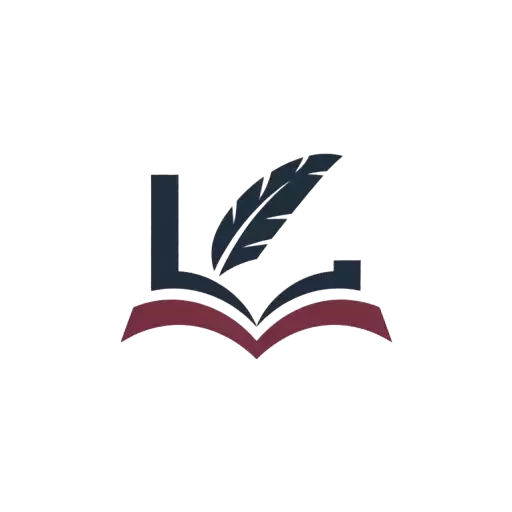Similes are powerful literary tools that use “like” or “as” to draw illuminating comparisons between different things. In this exploration of simile examples in literature, we’ll examine how authors from Shakespeare to contemporary writers have used these comparisons to transform abstract ideas into vivid imagery, helping readers connect more deeply with both universal experiences and nuanced emotions. From classical works that established enduring patterns to modern innovations that reflect our changing world, similes continue to shape how we understand and express human experience through literature.
Simile Examples in Literature
The essence of a simile lies in its ability to transform abstract concepts into vivid, tangible imagery through careful comparison using “like” or “as.” Consider Robert Burns’ immortal lines:
O my Luve is like a red, red rose That’s newly sprung in June; O my Luve is like the melody That’s sweetly played in tune.
Timeless Simile Examples in Literature
Shakespeare’s Masterful Comparisons
How can we begin on simile examples in literature without Shakespeare’s works, which provide a masterclass in simile craft. His sonnets and plays overflow with precisely crafted similes that illuminate human experience. In Sonnet 147, we find this feverish declaration of love:
My love is like a fever, longing still For that which longer nurseth the disease
From “Macbeth,” the First Witch delivers this haunting simile:
Like a rat without a tail, I’ll do, I’ll do, and I’ll do
While in “Romeo and Juliet,” Juliet’s radiance receives this luminous comparison:
Her beauty hangs upon the cheek of night Like a rich jewel in an Ethiop’s ear
Homer’s Epic Similes
Another unique take on simile examples in literature is found in the “Iliad” which demonstrates Homer’s genius for extended comparison. Consider this warrior’s transformation:
Like as a lion groweth in strength who was reared by a man, And at first he will not eat flesh, but afterwards As his strength increaseth, he devoureth the flocks And slayeth the man that reared him
Modern Literature’s Innovative Similes
Contemporary Fiction Masters
Modern authors continue to craft similes that speak to our times. Cormac McCarthy’s “The Road” offers this haunting image:
The days slid past like dead leaves on the river
One of the striking simile examples in literature is Zadie Smith’s “White Teeth” which gives us this explosive comparison:
His smile was like the afterglow of an explosion
Poetry’s Precise Similes
Sylvia Plath’s “Lady Lazarus” presents this confrontational simile:
Bright as a Nazi lampshade
Maya Angelou’s “Still I Rise” offers hope through natural imagery:
But still, like dust, I’ll rise
The Art of Crafting Effective Similes
Essential Components of Literary Similes
- Clear Connection: The comparison must illuminate the subject in a meaningful way
- Fresh Perspective: Avoid clichéd comparisons that have lost their impact
- Contextual Relevance: The simile should align with the work’s tone and themes
- Precise Language: Both “like” or “as” must be present to create a true simile
Common Themes Found in Simile Examples in Literature
- Nature imagery (comparing human experiences to natural phenomena)
- Animal behavior (linking human actions to familiar animal characteristics)
- Celestial objects (using stars, moon, and sun as points of comparison)
- Everyday objects (finding extraordinary meaning in ordinary items)
- Weather patterns (reflecting emotional states through atmospheric conditions)
Impact on Reader Experience
Effective similes accomplish several crucial functions in literature:
- Create memorable mental images that stick with readers
- Make abstract concepts more concrete and relatable
- Add layers of meaning through carefully chosen comparisons
- Establish mood and atmosphere through selective imagery
- Connect readers’ personal experiences to universal themes
Tips for Analyzing Similes in Literature
When encountering similes in literature, consider:
- What two things are being compared?
- Why did the author choose this particular comparison?
- How does the simile contribute to the work’s broader themes?
- What emotional response does the comparison evoke?
- How does the simile fit within the work’s historical and cultural context?
Conclusion
From Shakespeare’s eloquent comparisons to contemporary authors’ innovative imagery, these simile examples in literature remain essential tools in literature’s ability to illuminate human experience. Through careful analysis of these comparative devices, we gain deeper appreciation for both the craft of writing and the universal experiences they illuminate. What amazes me most is how these literary comparisons continue to evolve – from Maya Angelou comparing hope to spring’s first daffodil to Ocean Vuong likening memory to a burning photograph.
Whether we’re teaching students to craft their first similes or diving into scholarly analysis of metaphorical patterns, these comparisons help us make sense of our world in ways that straight description simply can’t match. Like a well-worn path through a dense forest, they guide us toward deeper understanding and connection with both the written word and each other.
Related Articles:
- Understanding Metaphor vs. Simile: Key Differences
- The Evolution of Literary Devices Through History
- How to Write Effective Comparisons in Creative Writing
- Famous Authors and Their Signature Literary Devices


